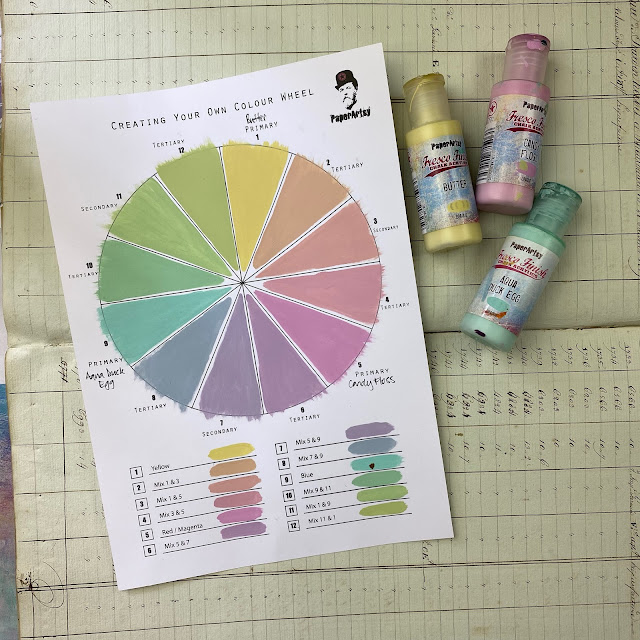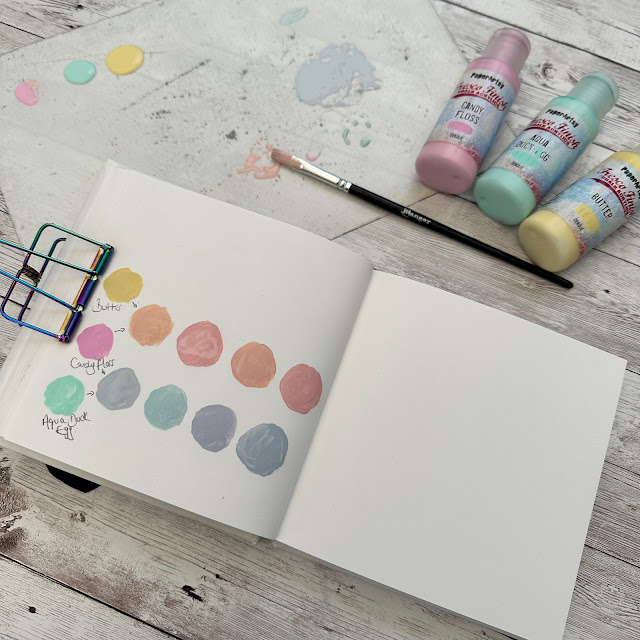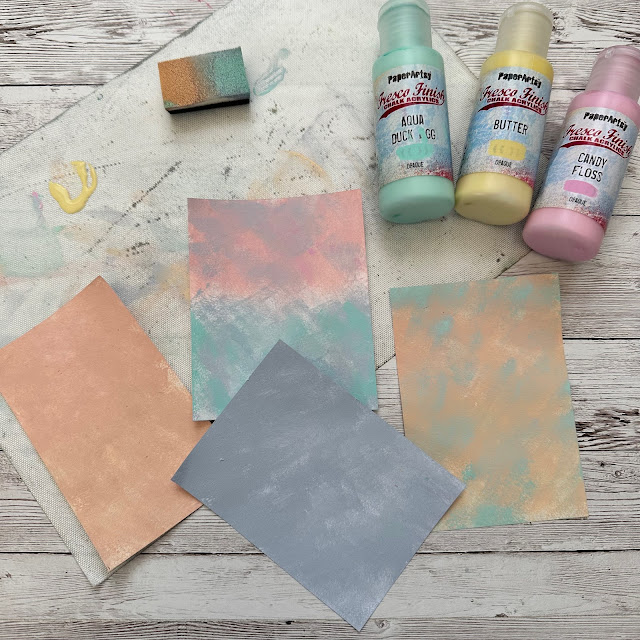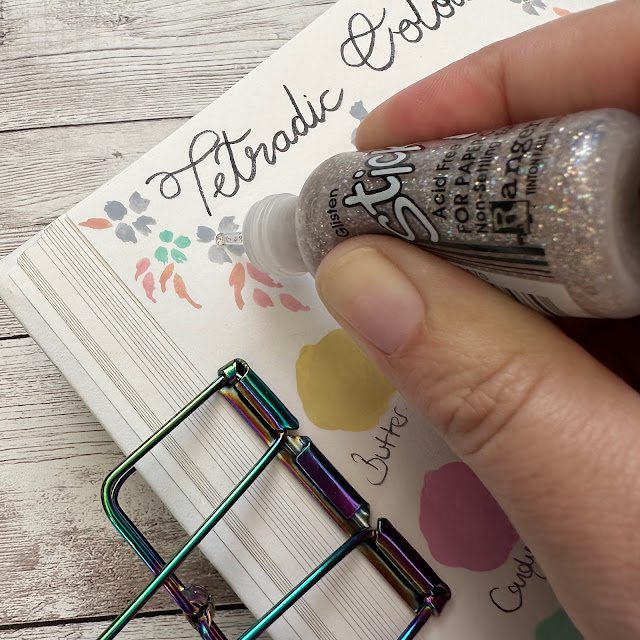Hi everyone
Victoria back with you today and I'm so excited to get all colourful with you as we revisit tetradic colour schemes as part of the 'Master Wheel' topic. I'll be creating an art journal spread using a skinny rectangle tetradic colour palette, but before we start I must confess that I'm not the most disciplined colour mixer, so prepare yourself for my rather slap dash approach!
Whilst I'm on a roll with the confession thing, I also thought I'd share that I'm a bonafide art journal junkie! I have dozens of different art journals and sketchbooks that I create in simultaneously and keep the journal I'm working in today, just for colour swatching and mixing. Here's a couple of reasons why I enjoy creating in art journals:
1. Art journals provide a safe space to play and experiment. They are relatively inexpensive and there's really only ever you going to be flipping through the pages.
2. They're a great reference tool for techniques, colours and compositions. Each page holds a lesson for next time and looking back on past pages is both inspiring and rewarding. It's a great way to see your progress and will teach you more about the things you love and the things you don't like so much.
I'm also going to share how the use of negative space in my pages, fits with this quarter's transparent theme, since you can see through to the white of the paper. Negative space is an important consideration in the composition of a piece and it consistently features in many of my creations. I'll show you how to use it to your advantage when creating loose florals and collaging geometric shapes like those in Tracy Scott's Minis.
The pastel colours I mix turn out really pretty and I really enjoyed all the playful elements of putting these pages together. I hope it inspires you to have a play in your art journal too!
These art journal pages use a minimal number of PaperArtsy supplies and a handful of other creative essentials. To mix my tetrad colours I use PaperArtsy Fresco Finish Acrylic colours; Butter (
FF129), Candy Floss (
FF70) and Aqua Duck Egg(
FF199). I then use two mini stamp sets
TSM10 and
TSM12 to create some collage shapes for the main focal point.
Before we get into the detail of the page creation, let's spend a couple of minutes revisiting the colour wheel and tetradic schemes.
In segments 1, 5 and 9 of the wheel below you can see our three primary colours; Butter, Candy Floss and Aqua Duck Egg. Secondary and tertiary colours are created by mixing different combinations of these three colours. To mix a secondary colour (segments 3, 7 and 11) combine an equal amount of two of the primary colours. To mix a tertiary colour (segments 2, 4, 6, 8, 10, 12) mix a bit more of the primary colour into the secondary colour.
Tetrads are four colours which are distributed evenly around the colour wheel, which means there is no clear dominance of a single colour.
They can either be found in the formation of a square (see image below).
Or in the formation of a rectangle (see image below for a skinny rectangle).
I decided to use a skinny rectangle tetrad scheme for my journal pages, selecting the colours in the top middle. This tetradic scheme is organised into two complementary colour pairs making it a rich and vibrant colour choice.
I started off by mixing my colours and testing these out in swatches on the lefthand page and had a couple of attempts at creating the secondary and tertiary colours from the tetradic scheme.
Once I was happy with my colour mixes I created some background papers, applying a single colour at a time to the paper, with a sponge.
I then added patches of one of the other colours on top, using a mix of complimentary (colours opposite each other) and analogous (colours next to each other) colour pairings from my colour mixes.
Finally I created some single coloured sheets and set them all aside to dry.




























Love this!
ReplyDelete